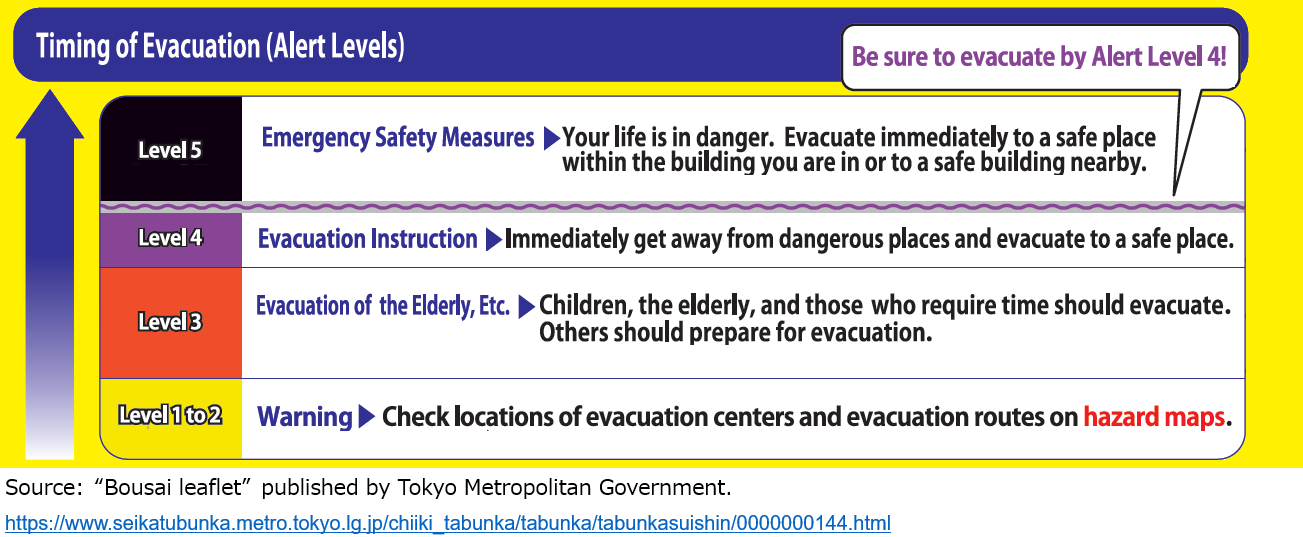Natural Disasters
Heavy Rainfall and Typhoons
In Japan, heavy rainfall and typhoons can have devastating effects.

Facts about Heavy Rain and Typhoons
-
Heavy Rainfall
Heavy rain comes in various forms, including prolonged rainfall, and torrential rain.
Prolonged rainfall – rain that continues for several days – is common from spring to the beginning of summer, and from the end of summer into autumn.
Torrential rains, where heavy rains suddenly fall in one place, generally last for a short period of time.They are common from late spring to summer. -
Typhoons
Typhoons are large whirlpool clouds that form over the warm seas south of Japan. Typhoons sometimes approach Japan, growing larger over the course of many days. Sometimes they pass over Japan.
When a typhoon gets close, strong winds blow and heavy rain falls. When it passes, usually the weather becomes sunny and clear.
Japan usually experiences typhoons between early summer and autumn.
When a typhoon forms, it will be reported in the news or weather forecast with a diagram like the one below. These show the typhoon's projected path, and allow you to see where the typhoon is expected to go, and when.
The size of the circles is not the size of the typhoon itself. They show the areas the center of the storm is most likely to pass through. These projected course diagrams are updated regularly. Be sure to check them frequently until the typhoon has passed.
Heavy rainfall may result in
- Flooded streets
Roads can overflow with water, becoming like rivers, making them impassable to both vehicles and pedestrians.
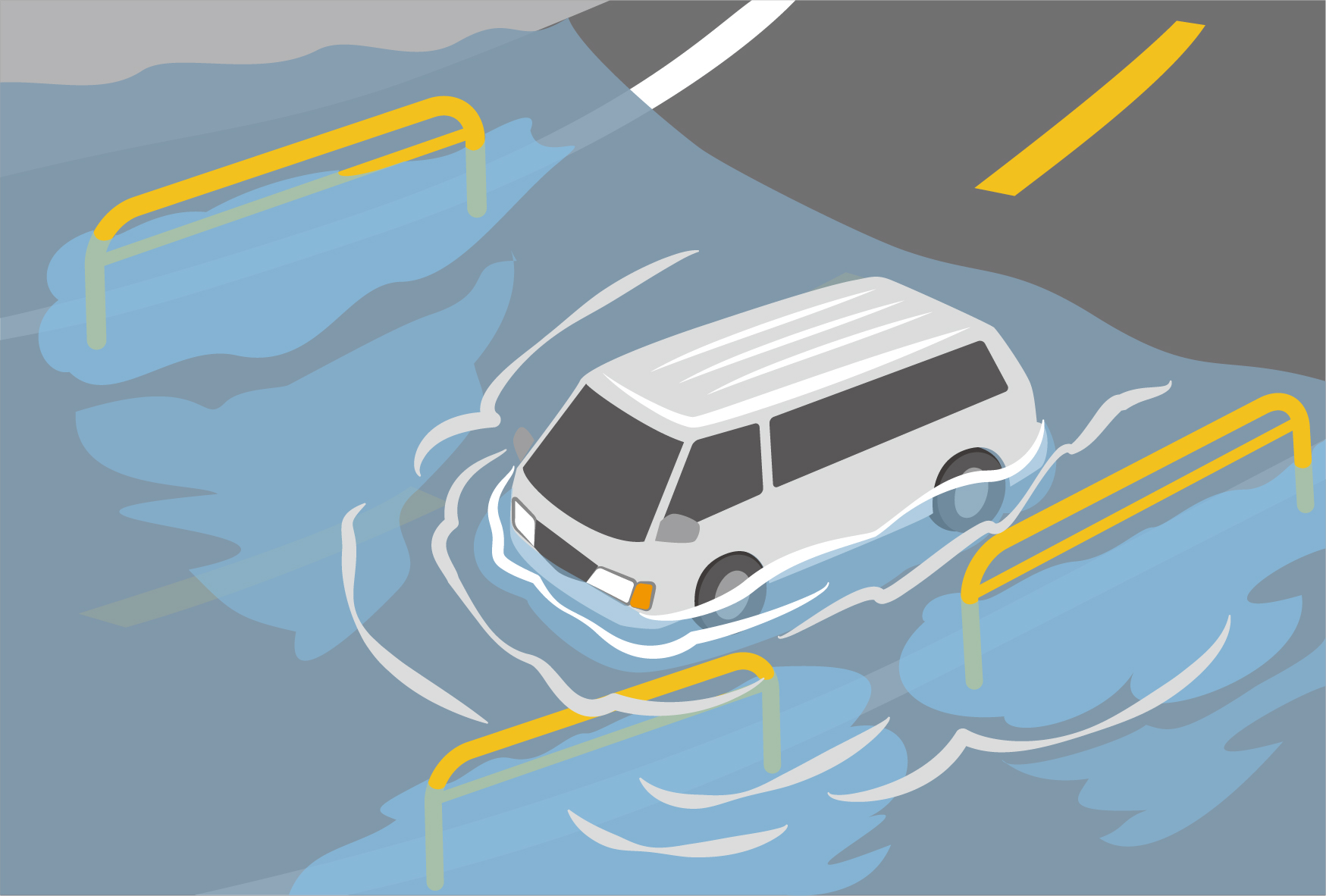
- Flooded homes
Water from flooded streets can enter residences and other buildings. - Flooded subways and underpasses
Subway operations may be suspended, and underpasses may be closed.
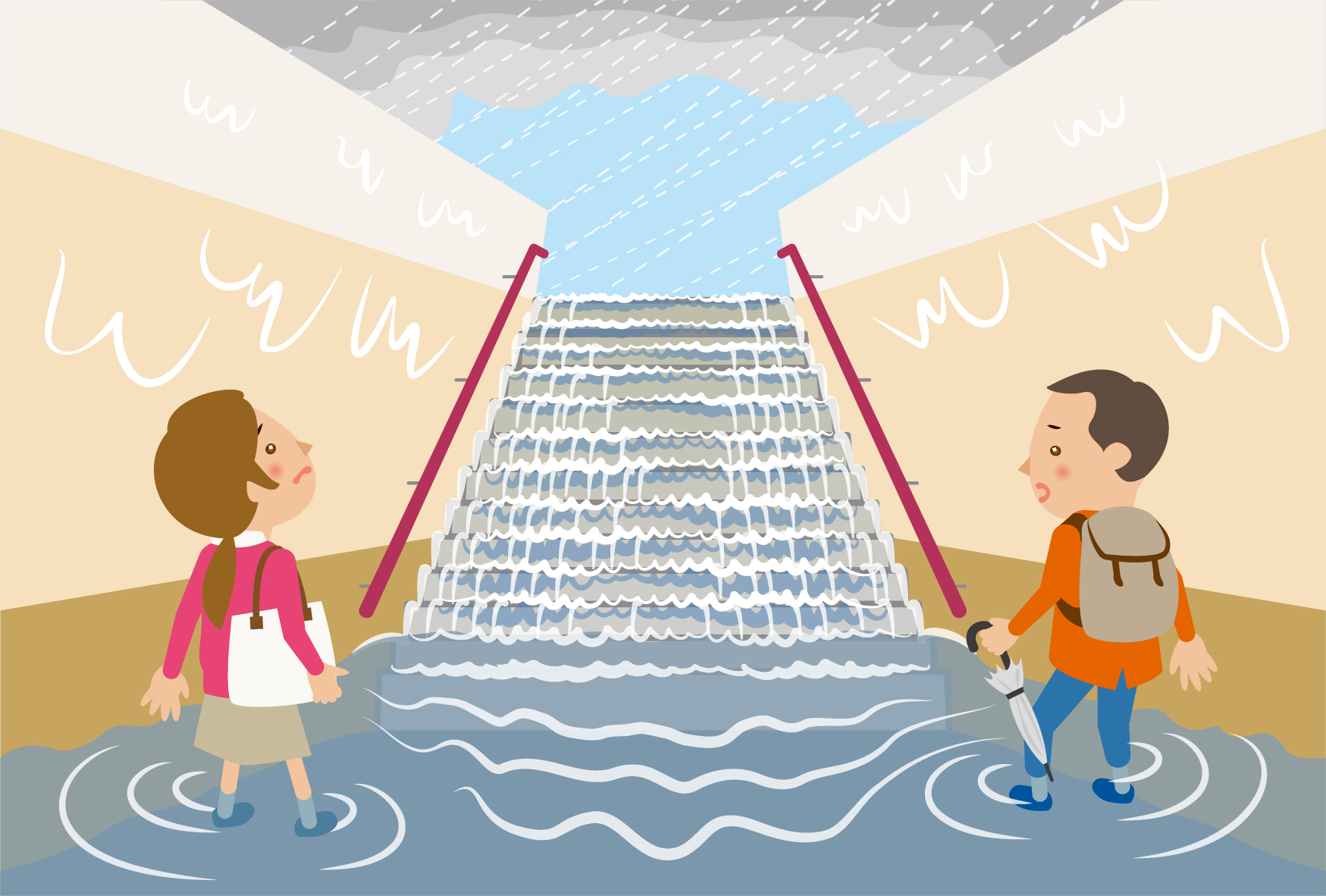
- Loss of electricity service
- Train service suspension
- Overflowing rivers
The water from overflowing rivers may wash away cars and houses. - Landslides
Loose earth and stone from mountains and cliffs can bury or carry away homes.
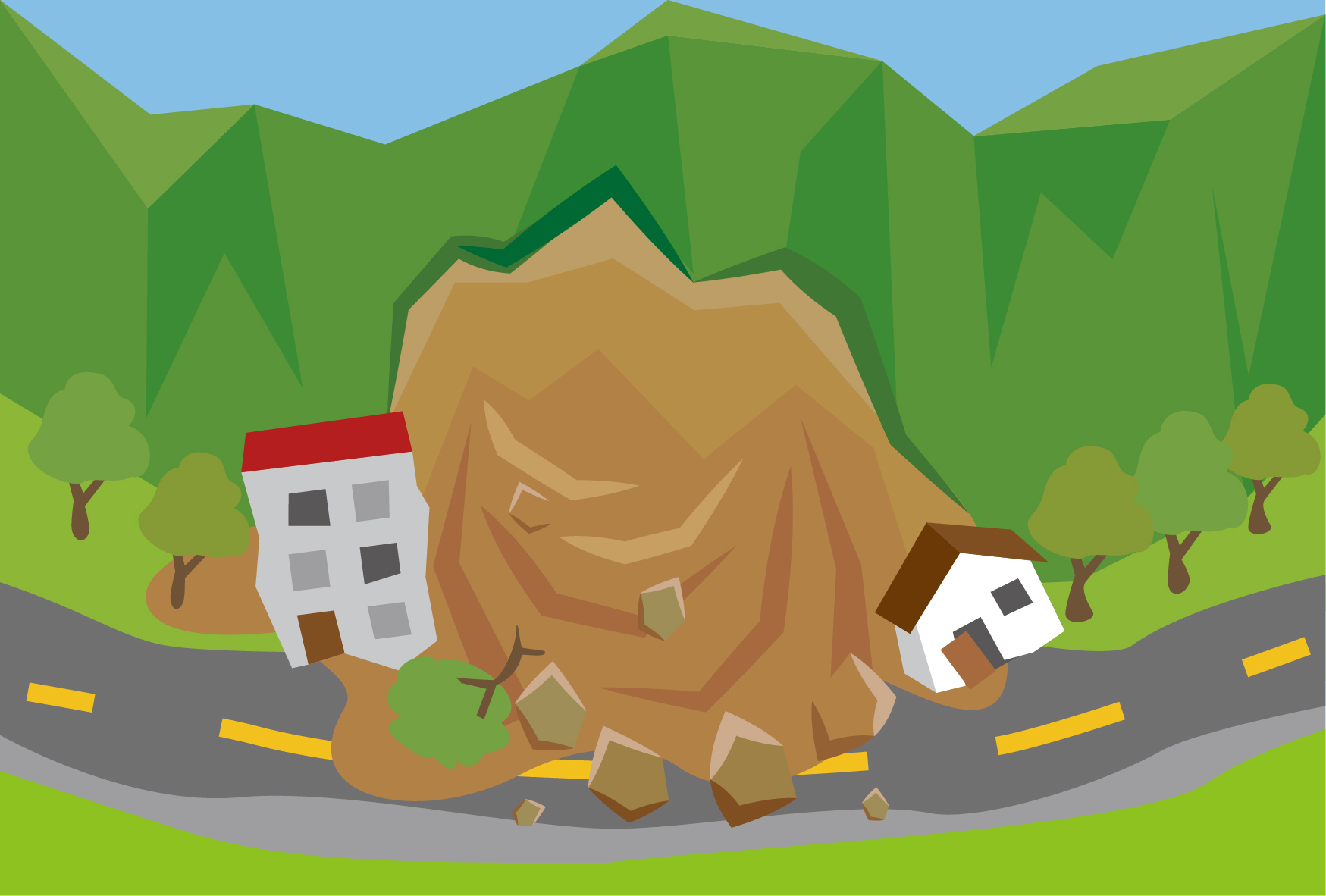
- Lightning
Lightning may strike people or buildings, causing injuries and fire.
Strong winds may result in
- Items placed in gardens or on balconies, may fall over or be sent flying
- Falling trees
- Roof tiles and shop signs may also fall or be sent flying.
- Loss of electricity service
- Train service suspension
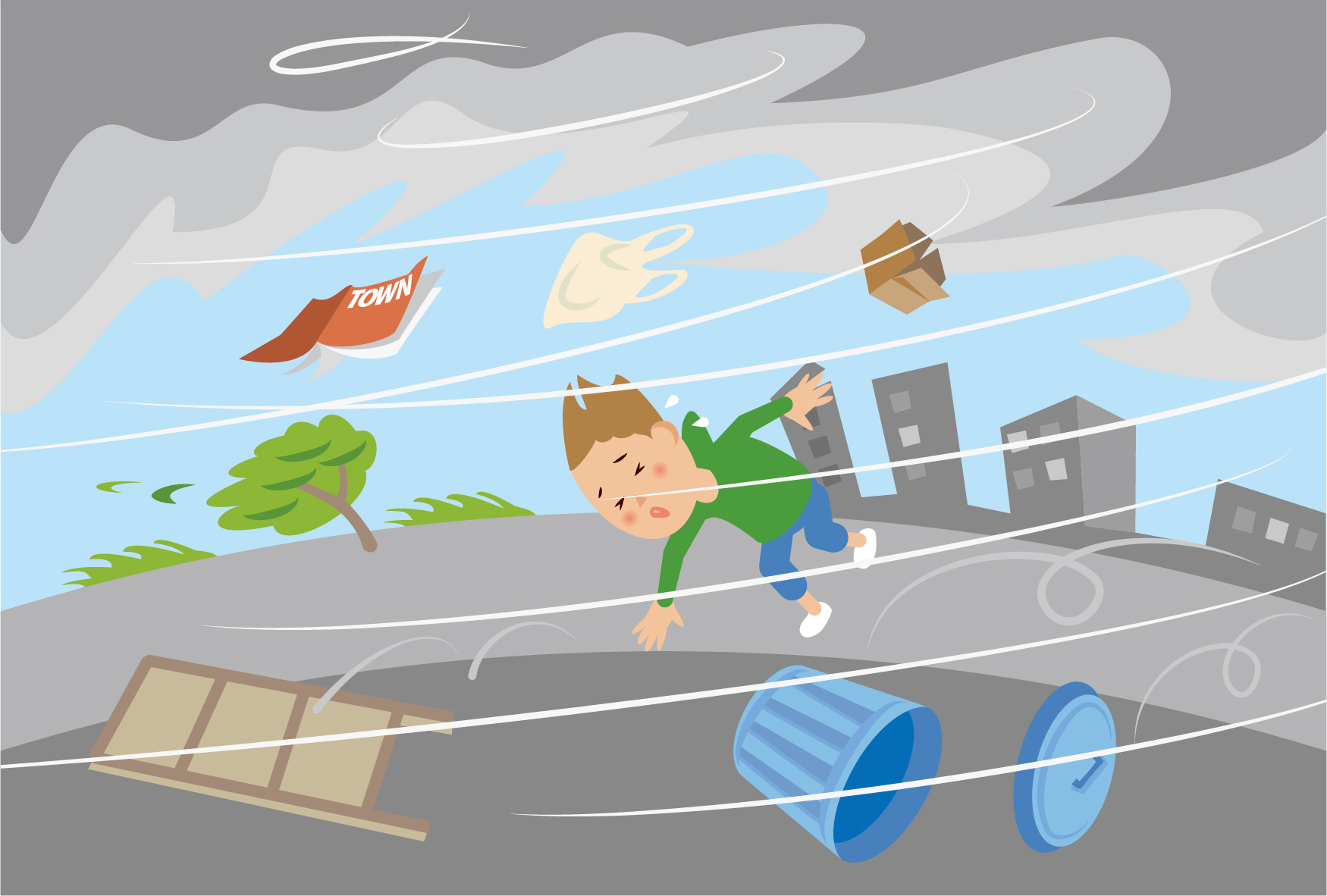
Hinan (Evacuation)
During a natural disaster, moving to a safe location is known as hinan (evacuation).
When there is a chance of a natural disaster, the Japan Meteorological Agency and local authorities will issue notifications known as Alert Levels. There are five levels in total, and at each level, there are various steps you should take. If you are in an at-risk area, you should evacuate before the Alert Level reaches 4.
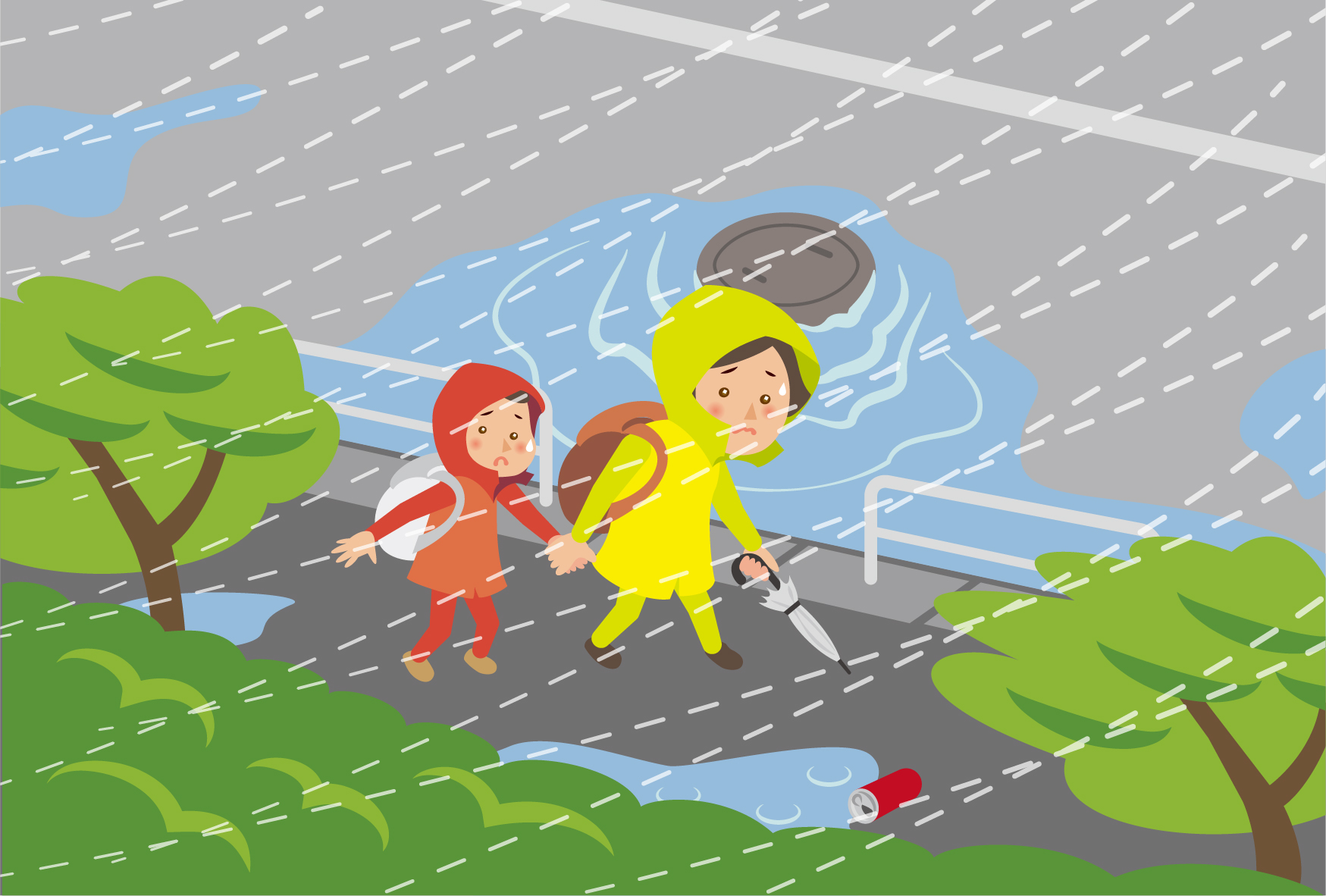
Alert Level 1
There will be an announcement by the Japan Meteorological Agency.
Check the weather forecast on TV or online. Prepare in advance of coming heavy rains or typhoons.
Alert Level 2
There will be an announcement by the Japan Meteorological Agency.
Check the homepage of your local authority to confirm where and how you should evacuate.
Alert Level 3
There will be an announcement by local authorities.
Those who need time to evacuate should head to a safe location immediately.
Everyone else should prepare to evacuate.
Alert Level 4
There will be an announcement by local authorities.
There is a risk of an imminent disaster. People in at-risk areas must evacuate by Alert Level 4.
Alert Level 5
There will be an announcement by local authorities.
A disaster is occurring. Find as safe a location as possible to take shelter – on upper floors, away from windows.
Check how to evacuate on the following site
Cabinet Office Disaster Prevention Information Page (with a multilingual QR code in the PDF)
Find information on the locations of evacuation areas/centers on the following site
Tokyo Metropolitan Prevention Map (Machine translation available [English, Korean, Chinese])
Column 1:Things to remember: Keikaku-unkyu (Planned Mass Transit Suspension)
In the event of heavy rain or typhoons, trains and buses may run less frequently, or be suspended entirely. This is known as Keikaku-unkyu (a planned mass transit suspension). Usually they are planned the day before the heavy rain or typhoon is expected. They will be announced via television and online news. Check to see if the buses or trains you use will be operating.
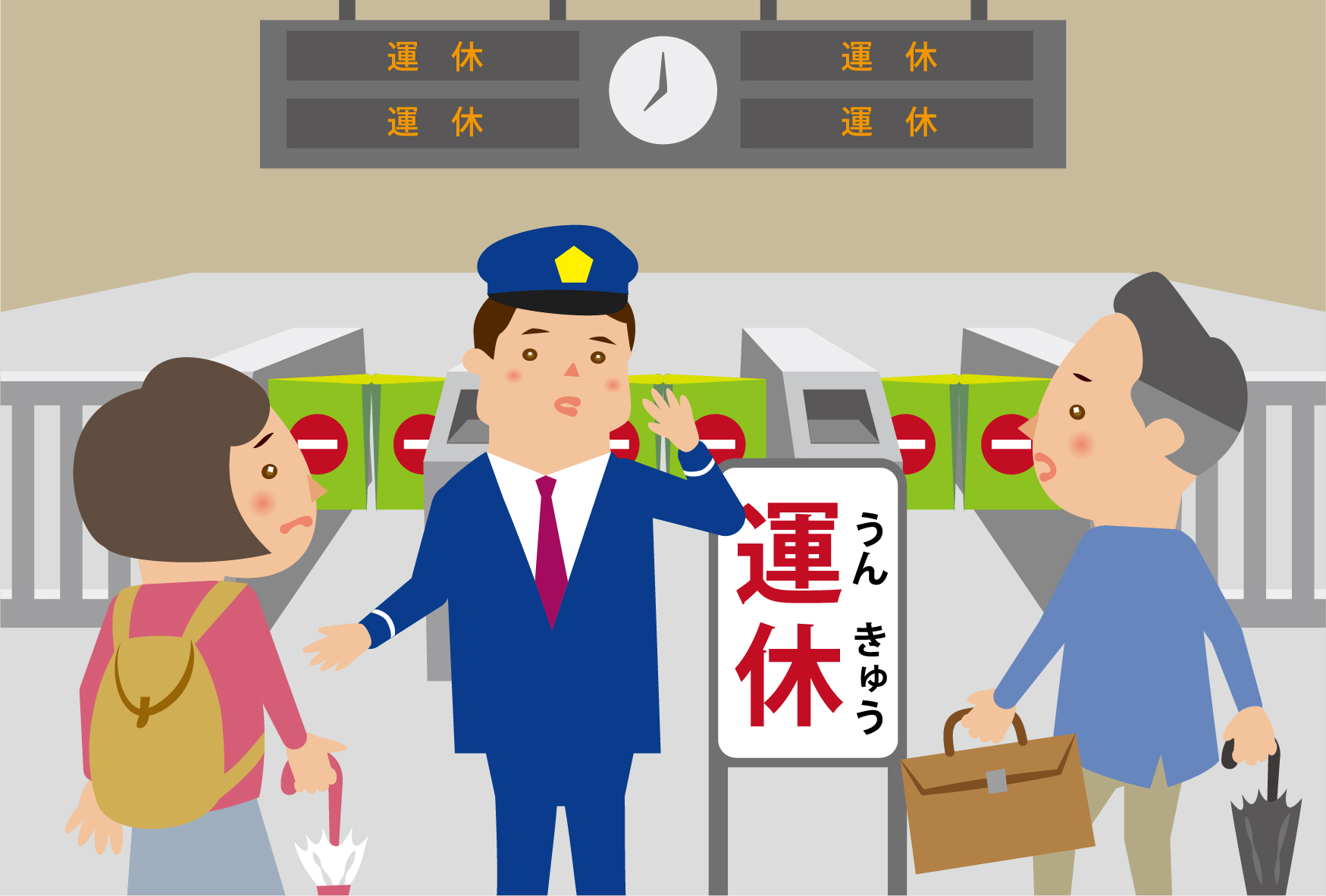
Column 2:Japan's Rainy Season
The period between spring and summer, when there is a lot of rainfall and few clear sunny days, is known as tsuyu (rainy season). The start of the rainy season is called tsuyu-iri, and the end is called tsuyu-ake, and the timing differs depending on the area.
In Tokyo, it is common for the rainy season to last from early June to mid- to late July.

